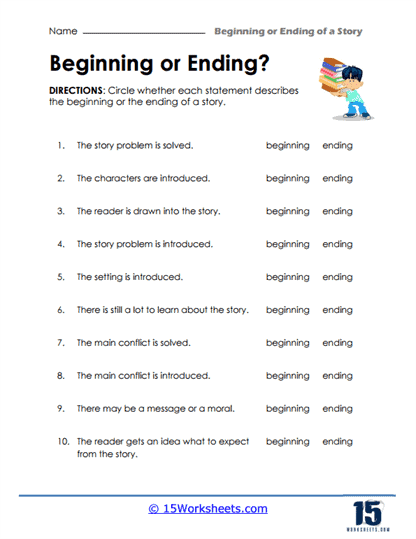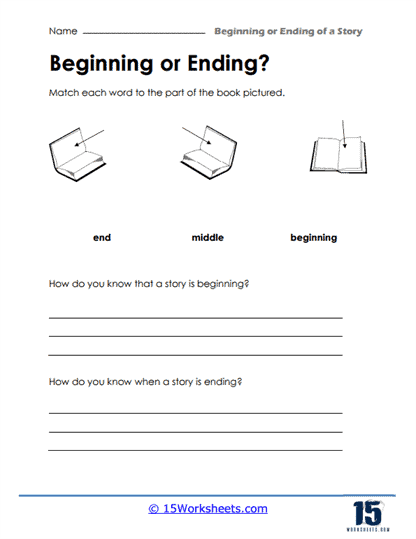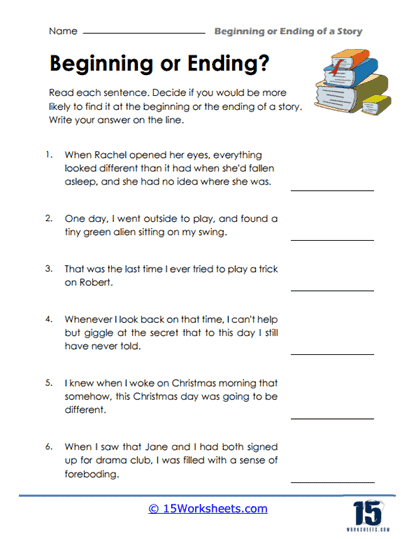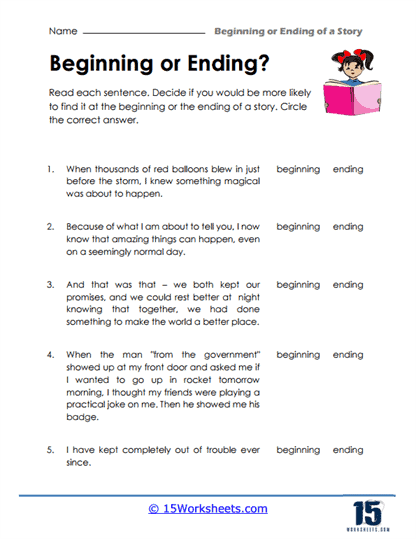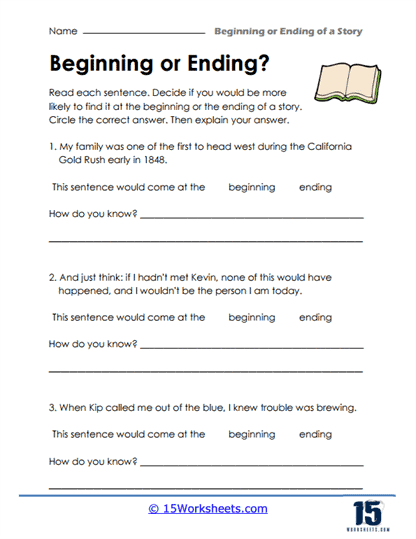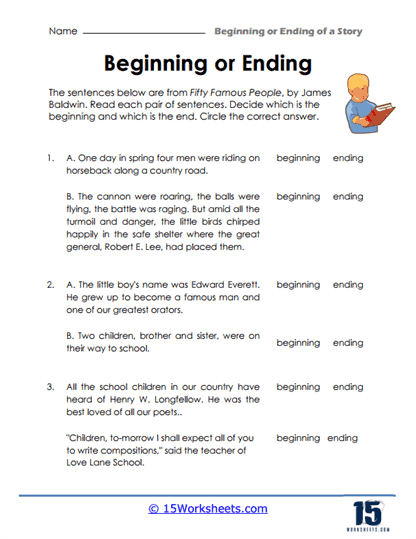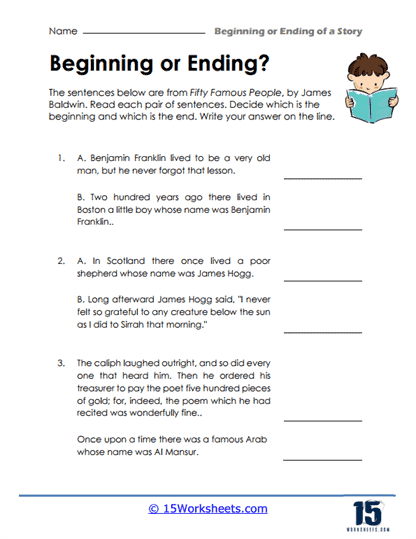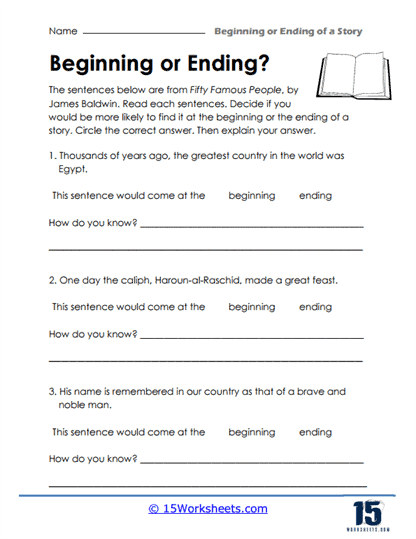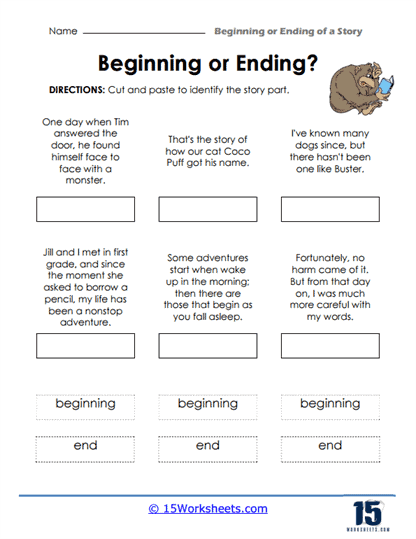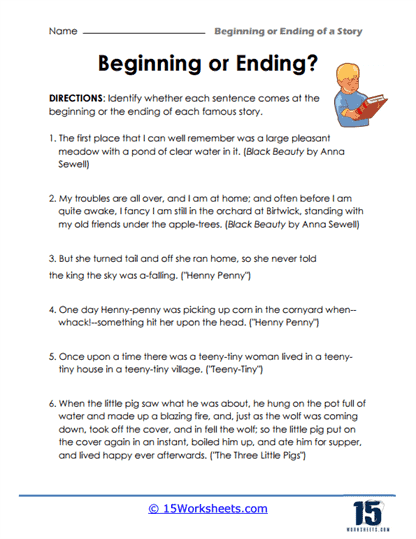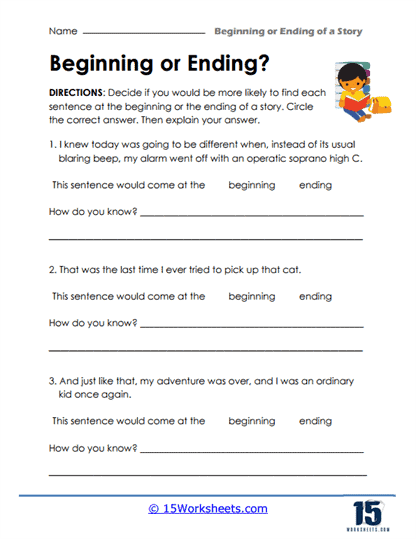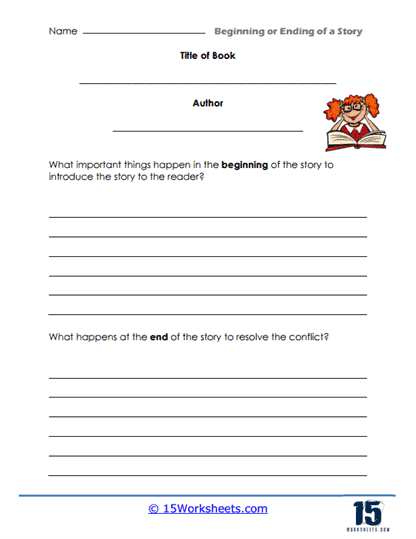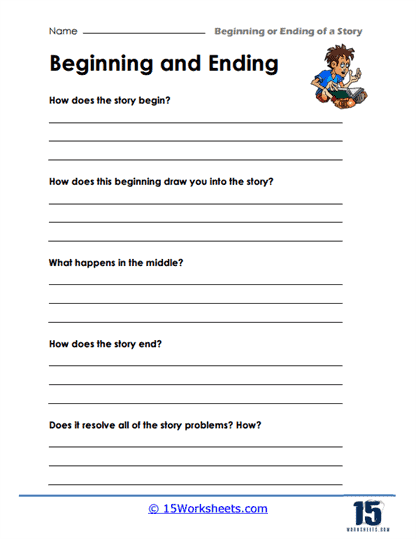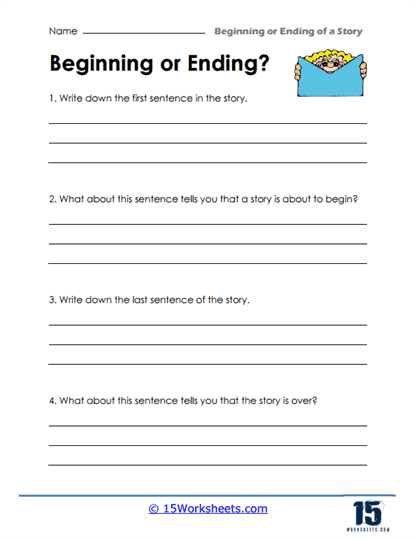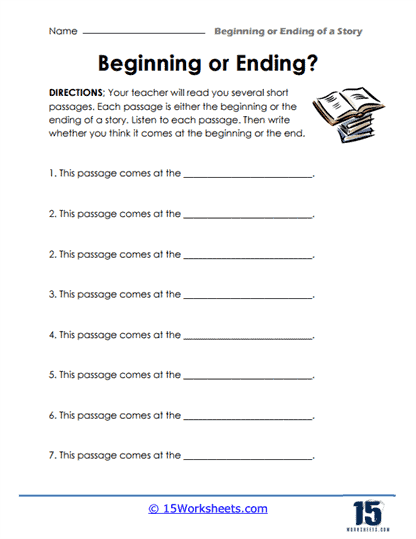Beginning or Ending of a Story Worksheets
All About These 15 Worksheets
The art of storytelling is a timeless and essential skill that transcends cultures and generations. It holds the power to captivate, inspire, and convey powerful messages.
This collection of 15 meticulously designed worksheets titled “Beginning or Ending of a Story” is crafted to empower students with the proficiency to create and recognize story beginnings and endings.
Through this collection, students embark on a creative journey that not only enhances their reading skills but also nurtures their imagination, critical thinking, and emotional intelligence.
The ability to create engaging story beginnings and satisfying endings is a crucial aspect of effective storytelling. It sets the stage for a reader’s engagement, establishes the tone, and leaves a lasting impression. In the realm of education, this skill is paramount as it helps students develop essential language and communication skills while encouraging them to think critically and creatively.
What Are Beginning or Ending of a Story Worksheets?
This excellent series of worksheets will help students practice identifying and understanding the beginning and ending of a story. You will find exercises such as reading passages, questions, writing prompts, or graphic organizers, that focus on the elements that signal the start or conclusion of a narrative.
These worksheets can help students develop skills such as:
Recognizing the Structure of a Story – By working with beginning or ending of a story worksheets, students can become more familiar with the elements that typically appear at the start or finish of a narrative, such as character introductions, setting descriptions, conflict resolutions, or conclusions.
Reading Comprehension – These worksheets can help improve students’ reading comprehension by encouraging them to pay attention to the details and structure of a story. This can lead to a deeper understanding of the narrative and its various components.
Analyzing and Interpreting Texts – By focusing on the beginning and ending of a story, students can practice their analytical and interpretive skills, considering how these parts of a narrative contribute to the overall meaning and impact of the story.
Writing Skills – Some beginning or ending of a story worksheets may include writing prompts that ask students to create their own story beginnings or endings, or to rewrite existing ones. This can help students practice their creative writing skills and learn how to craft engaging and effective story beginnings and endings.
Critical Thinking – By examining the beginning and ending of a story, students can develop their critical thinking skills as they consider how these elements relate to the overall narrative, its themes, and its impact on the reader.
How to Identify the Beginning or Ending of a Story
Identifying the beginning or ending of a story can be crucial for understanding its structure and overall narrative. Here are some tips to help you recognize the beginning and ending of a story:
Look for Introductory Elements – At the beginning of a story, the author typically introduces the main characters, setting, and initial situation. This is also known as exposition. Pay attention to these elements to recognize the beginning of a story.
Identify the Inciting Incident – The inciting incident is an event or situation that sets the story in motion and propels the main character into action. This usually occurs near the beginning of the story and serves as a starting point for the plot.
Notice Changes in Setting or Time – Authors may use a change in setting or time to signal the beginning or end of a story. Look for phrases like “once upon a time” or “many years later” that indicate a shift in time or location.
Watch for Conflict Resolution – The climax of a story often leads to a resolution of the main conflict. This can signal the ending of the story, as the characters’ problems are resolved, and a new equilibrium is established.
Look for Concluding Elements – The ending of a story usually wraps up loose ends, provides closure for the characters, and offers a sense of finality. Look for phrases like “and they lived happily ever after” or “the end” to recognize the conclusion of a story.
Observe the Tone or Mood – The tone or mood of a story can change as it progresses from the beginning to the end. The beginning may have a lighter tone, while the ending might evoke a sense of completion, resolution, or even sadness, depending on the narrative.
Pay Attention to Character Development – Characters often undergo changes or growth throughout a story. Noticing these changes can help you identify the beginning or ending of a story, as characters might be introduced at the beginning and achieve their goals or find closure by the end.
Examine the Story’s Structure – Many stories follow a traditional narrative structure, such as the three-act structure or the hero’s journey. Familiarize yourself with these structures to identify key plot points and recognize the beginning or ending of a story.
By using these tips and paying close attention to the narrative elements of a story, you can more easily identify the beginning and ending of a story and gain a better understanding of its overall structure and purpose.

